
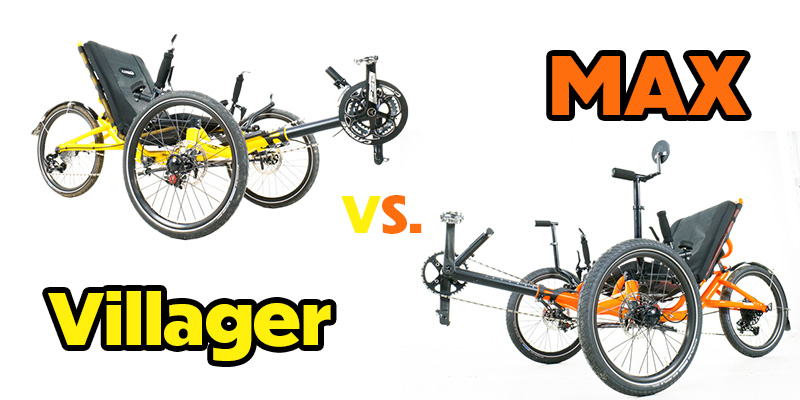
Catrike Villager vs the Catrike Max - Which Trike Is For You?
Published on 02/01/2024
Hello and welcome back to another Utah Trikes article. Today we will be pitting two similar recumbent trikes against each other. Not to the death but just to find out what the differences between these trikes are and which model would be the best for you.
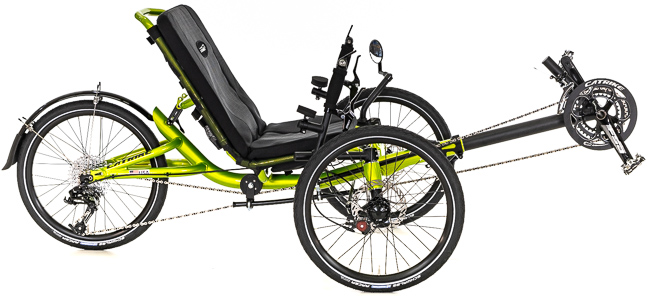
In today's article the subjects of our comparison will be the Catrike Villager and the Catrike MAX. Two very similar trikes that have a lot of differences once you take a look under the hood. To sort all of this out let's get right into it.
With so many options for Trikes models itís hard to decide which trike is the best for you, especially when so many models are just so similar. In the case of this trike mashup the Villager and the MAX are both very similar. Their frames look the same and have the same seating position.
This is because the MAX was based off of the Villagers frame and design so they share a lot of similar characteristics such as they are both taller touring trikes with an emphasis on comfort, They are built with higher and more upright seating, and share a similar frame shape.
Released in 2008 the Catrike Villager was the 7th model to be made by Catrike and it was made to be the Urban cruiser variant of the Catrike Trail. The Villager sat higher than all other Catrike models at the time, it sat at 12.5in where all other models were typically sitting at 10-11in off the ground. The higher seat made the Villager ideal for those looking for a trike that is easy to get in and out of, while still having excellent gearing and high end performance.
Eventually the basic model of the Villager changed with the addition of a fully foldable seat, 3x10spd gearing and a padded seat. With all of the additional features added to the Villagerís basic frame it soon became one of the easiest trikes to get into for new Recumbent trike riders.
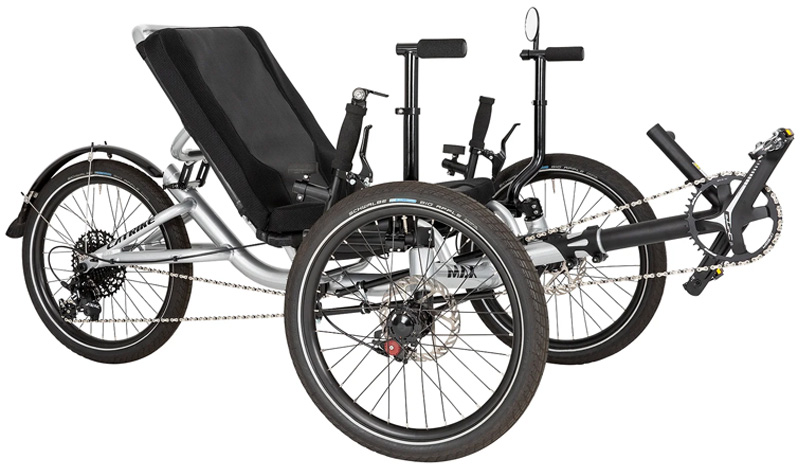
In 2023 rumors of a new heavy duty Catrike model started circulating around the dealer channels. The rumors were true and after 4 years of no models, the Catrike Max was released. Both the Villager and the Max share very similar design characteristics which can make it hard to distinguish between the two models. Iíve had a lot of experience with both the Villager and the Max and can attest that both have distinct riding profiles that make them unique and with this video today I want to help you better choose between the two.
Both the Catrike Villager and the MAX have 20in wheels, a folding adjustable seat with a comfortable seat mesh and thatís about where the similarities end. As with most things in this world, appearance can be very deceiving.
Taking a closer look at the dimensions for both trikes we can see that the Max has a wheelbase of 40in, a wheel track of 34in and a total width of 37.25in. In comparison the Catrike Villager is both smaller and narrower than the MAX with a wheel track of 31 inches, which further leans into the MAXís true design purpose.
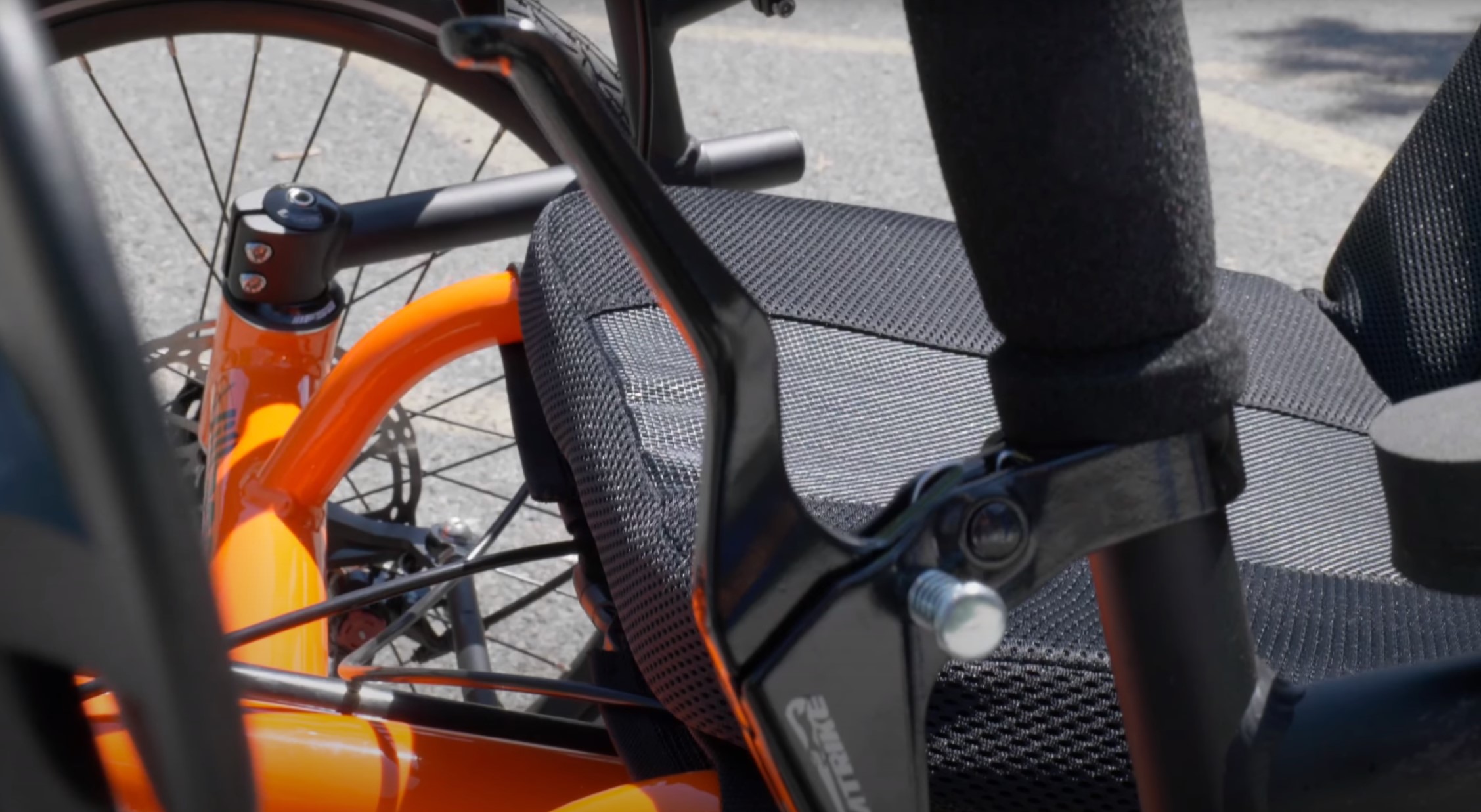
Like the name entails, the MAX has the maximum weight limit that weíve seen on a Catrike. All Catrikes up until the MAX have had a weight limit of 275 lbs which is decent enough for most riders but for me and other weighty riders it is very limiting.
The MAX changed the game by being the first Catrike to have a 425 lb weight limit. This allows for bigger riders to be able to enjoy a Catrike and to carry even more cargo if needed. To go along with the higher weight limit and to increase accessibility for heavier riders the cockpit and seat are widened to better fit riders like myself.
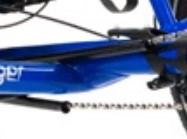
Catrike achieved this insane weight limit by taking the Villager frame and strengthening the cruciform on the trike and by making it 4in wider for better weight distribution. For clydesdales like me this is excellent news and why I actually have a MAX of my own. Of course a frame is not the only thing that makes up a trike, letís talk about the functionality differences between the Villager and the MAX.
The Villager comes with a FSA Gossamer 52/39/30 Triple Crankset and a Sram PG-1050 11-36T 10SP Cassette which with the Villagerís 20 by 1.5 inch rear wheel makes it ideal for Urban cruising and even some faster paced riding.
In comparison the MAX does not have a 3-speed front crankset; it instead has a FSA Omega 42 MegaTooth Crankset and a Sram Apex 11-42T 11-speed Cassette paired with a 20 by 2 inch rear tire. This makes the max about 3 mph slower than the Villager in its highest gear but in the lowest gear on the MAX it is .5 mph faster than the Villager.
For climbing the MAX has a slight advantage but you should not expect to be breaking any land speed records with it, unless youíre going to be ordering a motor.
The 11-speed Cassette on the MAX is ideal for use with a mid drive motor like the Ecat Bosch or the Bafang Mid Drive as the lower end gearing on the Sram Apex Cassette would make it so that your motor would have to work less to get you uphills and while youíre using pedal assistance you would have an easier time climbing.
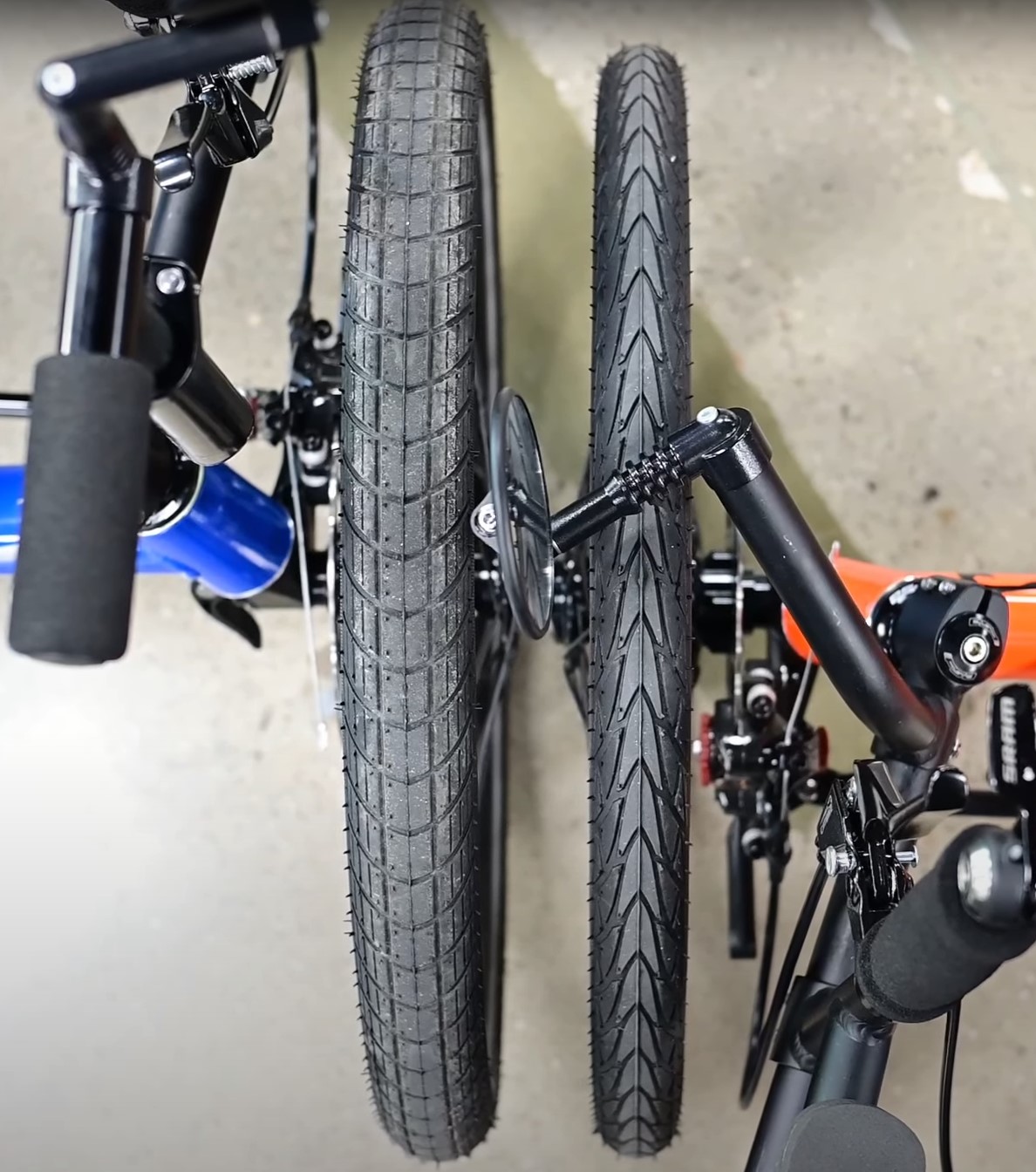
The MAX also comes with heavy wheels to compensate for the expected heavier load and the heavy duty wheels also come with the Schwalbe Big Apple 2in wide tires while the Villager comes with Marathon Racer 20x1.5in tires which makes the MAX better for off roading but slower on the roads due to increased traction from the wider tires.
To get a better feel for the difference between the two models I took them both out for a quick test ride so I could gauge the differences between the trikes in real time.
To preface this I do have extensive experience with both the Villager and the MAX, like I said before I even have a MAX of my own, this ride was just to get a real time side by side feel, like I did with the 559 and Trail in the previous video.
The first trike I took out was the Catrike Villager. The Villager was quick to accelerate and felt light and snappy on the turns and with the 3 Speed gearing I was able to get up to 15 MPH with no problems.
When going uphill in a low gear I did feel like I was moving at a very slow pace but when going down hill I was able to keep pedaling without spinning out. On my way back I made sure to ride on the lawn to terrorize the gardeners and get a feel for the Villager off road.
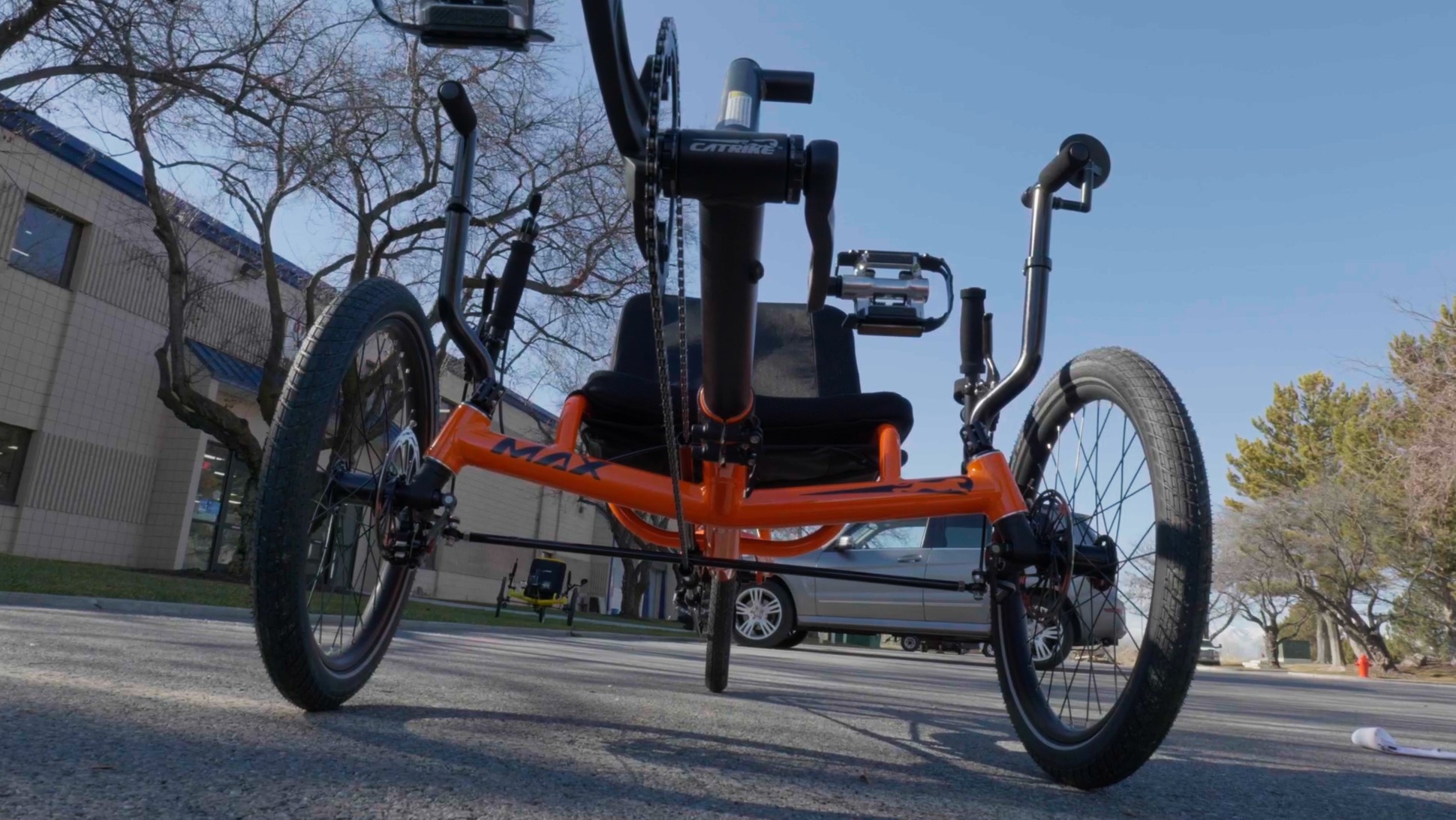
After struggling to pedal more than a few feet, I took the trike back into the shop so I could switch out my ride for the MAX. While riding the MAX it definitely has a heavier feel to it then the Villager and it is not nearly as quick to turn which would be due to its larger wheelbase and track.
I took the MAX to a nearby hill and I cranked the MAX into its lowest gear and it definitely did feel faster going uphill than the Villager, it wasnít anything mind blowing but anything that can help a hill go by faster is a major advantage in my book.
As with the Villager I decided to take the MAX on a quick detour by the lawn and as I expected the larger tires from the MAX made pedaling through the grass a lot easier and was not as draining as trying to pedal with the narrower tires on the Villager.
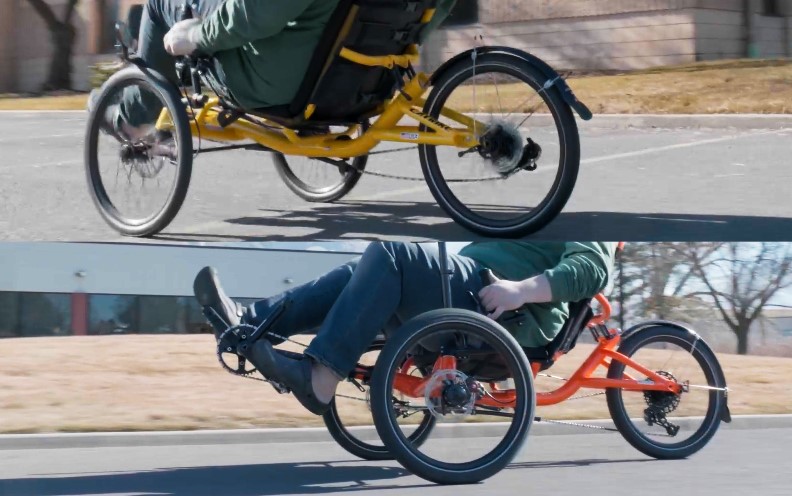
After riding both I do prefer the feel of the MAX because it was also much easier for me to fit into and when going up steep hills I had to work a lot less for more distance. Of course you can install wider tires onto the Villager and be able to take on the same terrain as the MAX. Speaking of parts installation, let's get into what modifications can be done to both models.
Most modifications that can be done to one Catrike model can be done to all Catrike models but there is one modification that the Max is not compatible with and that is a larger rear wheel.
A larger rear wheel typically means more speed and with our extension plates for the Catrike models and the dropout conversion plates most Catrikes can be upgraded to have a larger wheel then what they comes stock with but since the rear end of the MAX was built for a 20in wheel and it has a thru-axle there is really no way to add on a larger rear wheel as our dropout conversion plates only extend that rear end of a trike out by a couple inches, which for Catrikes with a 26in thru-axle wheel is plenty of space to upgrade, but the 20in rear end of the MAX simply does not have enough space.
A Thru-Axle wheel is also not compatible with an internally geared hub but our conversion plates and a new wheel are easy enough to install onto a MAX and are readily available in our shop.
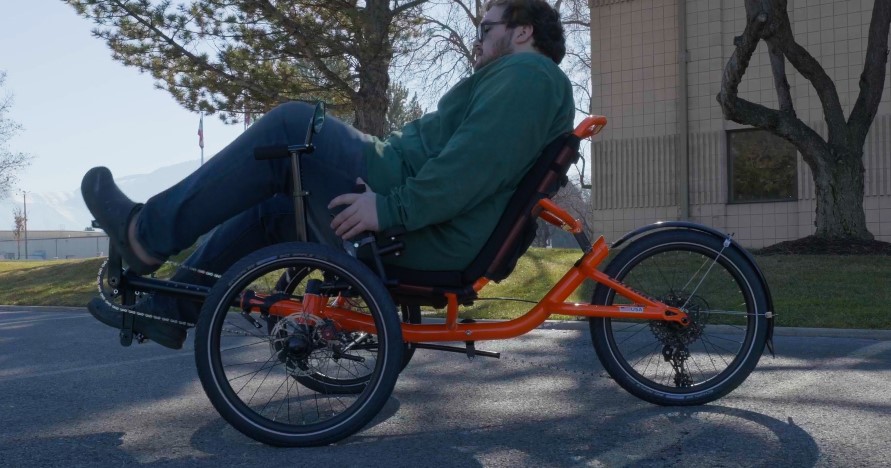
The only other addition that the MAX has over any other Catrike model is that the MAX comes stock with Catrike exit assist bars. Exit assist bars assist riders with getting in and out of their trike and are always helpful to have whether you have trouble mounting your trike or not.
When you put both the MAX and Villager side by side you would be hard pressed to find trikes that look so similar to each but are both so different. The Villager is perfect for those looking to get out and cruise and the MAX is the trike for those large people looking to get out and ride. Both of these trikes offer you the opportunity to get out, ride and enjoy this gorgeous earth that we have.
Thank you all for watching. I hope this was able to clear up some of those technical differences between these two trikes.




